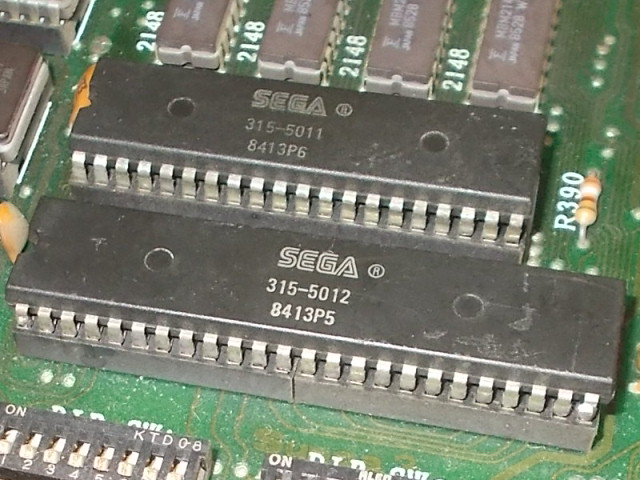The board was in good shape but played almost 'blind' as most of graphics was missing :
I experienced this kind of issue different times on other Konami boards like in these past repair from me (thanks to Porchy for allowing hot links from JAMMArcade)
https://www.jammarcade.net/the-simpsons-repair-log-3/
https://www.jammarcade.net/g-i-joe-double-repair-log-3/
The cause was due to a bad '053251' custom ASIC :
As MAME source says, this custom takes on input different layers of graphics as well as some priority bits and outputs 11 bit of palette index plus two shadow bits :
Probing the outputs revealed they were dead, stuck at LOW or HIGH logical level :
Having a spare I decided to replace it :
I soldered down the spare repairing a lifted trace at same time (some green lacquer used to hold the wire in place) :
In ths way most of graphics were restored but the sprites were wrong with parts of them spread on the screen :
I launched a MASK ROM check which reported three bad 8Mbit devices :
This was possible but unlikely although we all know Konami MASK ROMs are prone to failure.
Judging from the issue (parts of sprites misplaced on screen) I was more inclined to think about an addressing problem hence I decided to replace the '053246'.It came off quite easily with my hot air station :
Soldered down the spare :
Powered the board up again and sprites were now correctly displayed :
No further issues found, board 100% working.Job done.

































